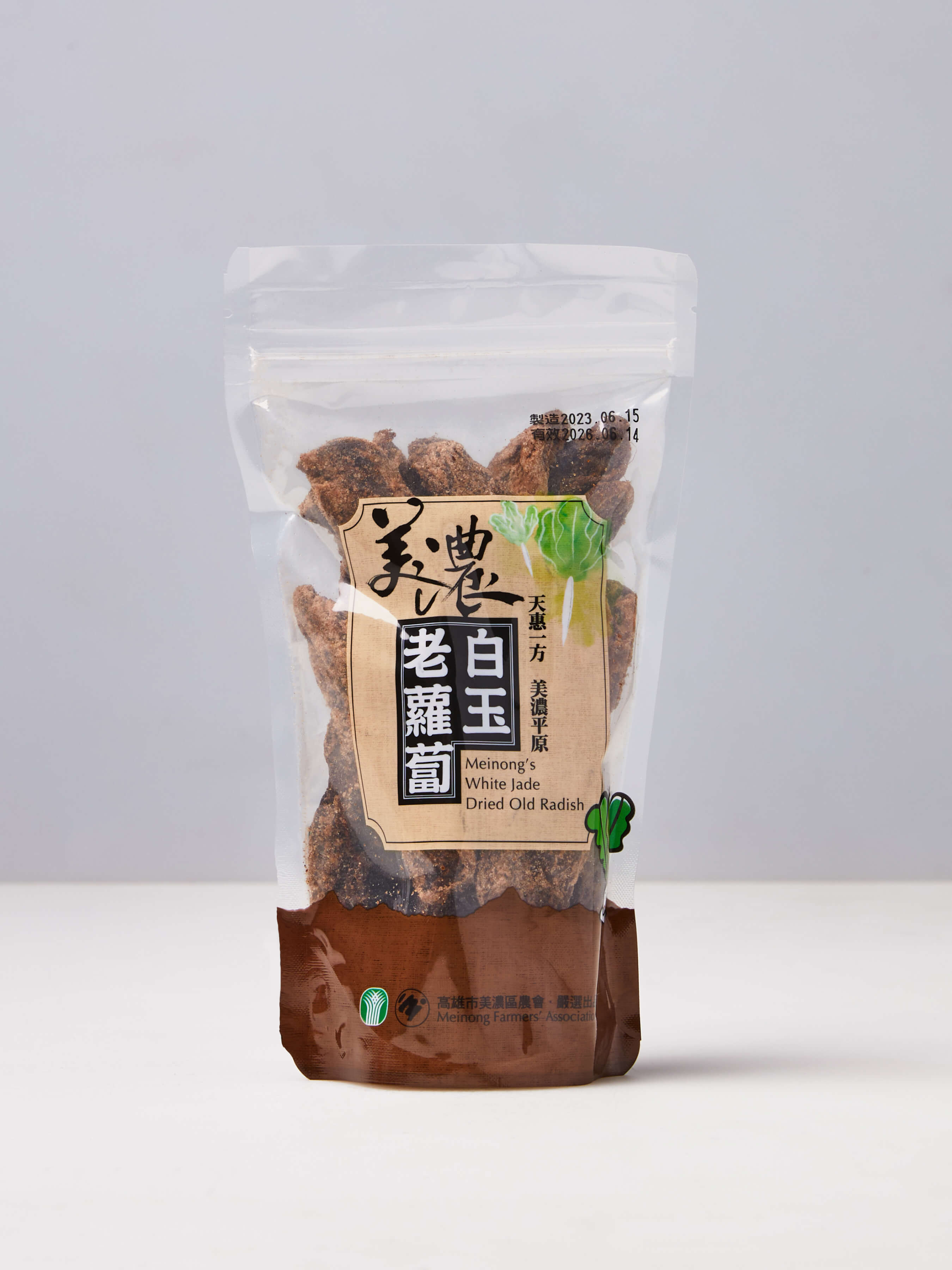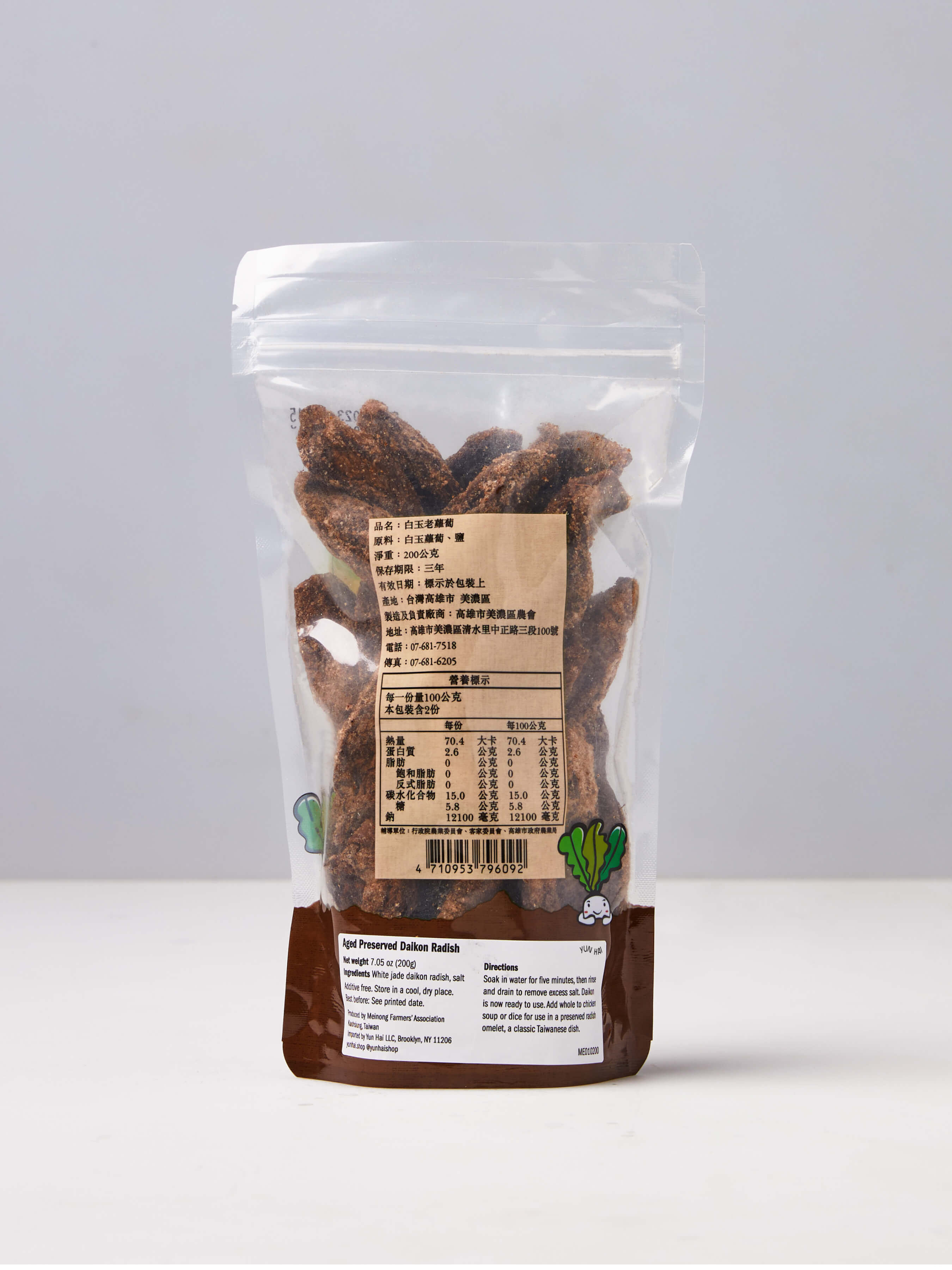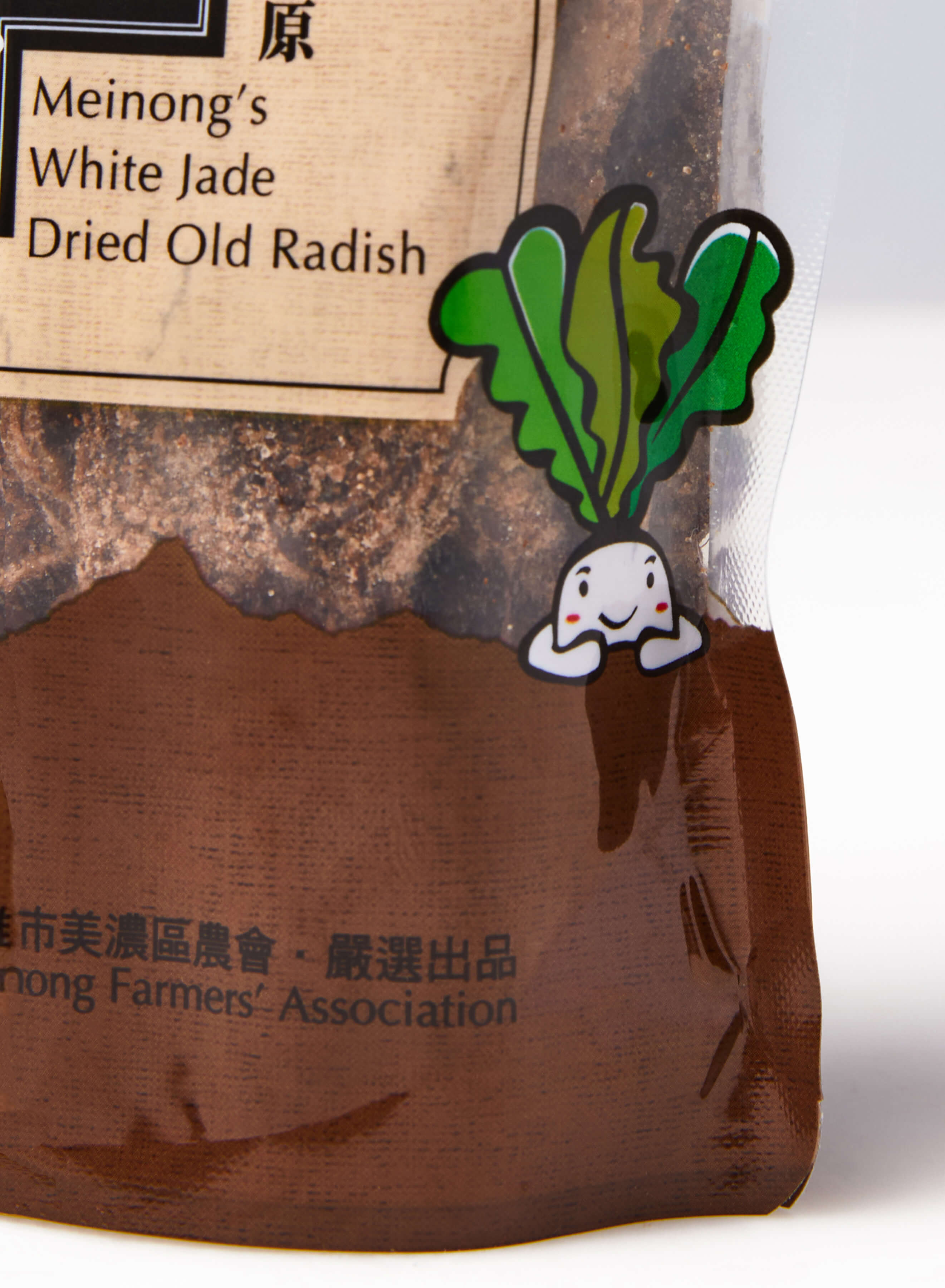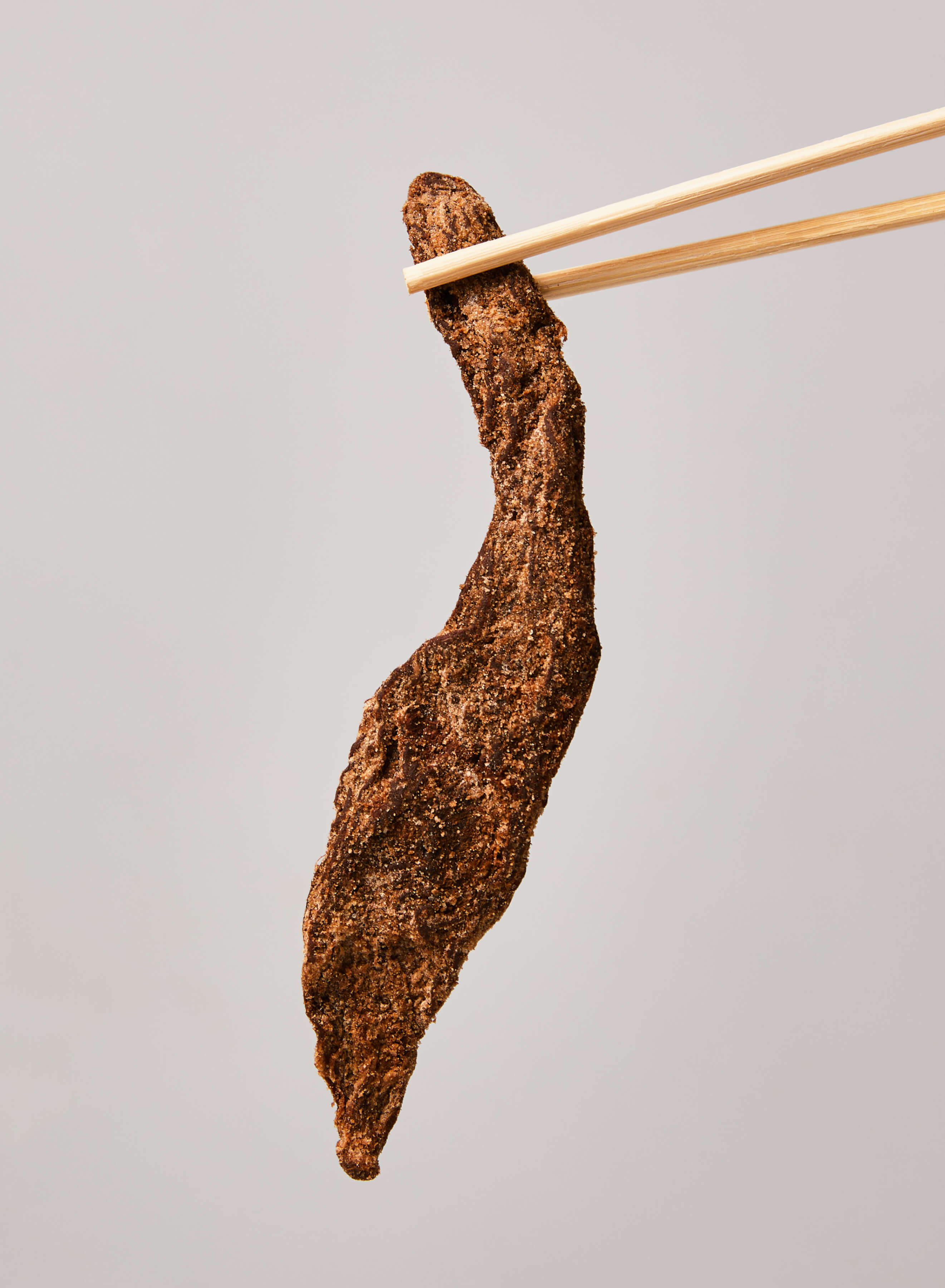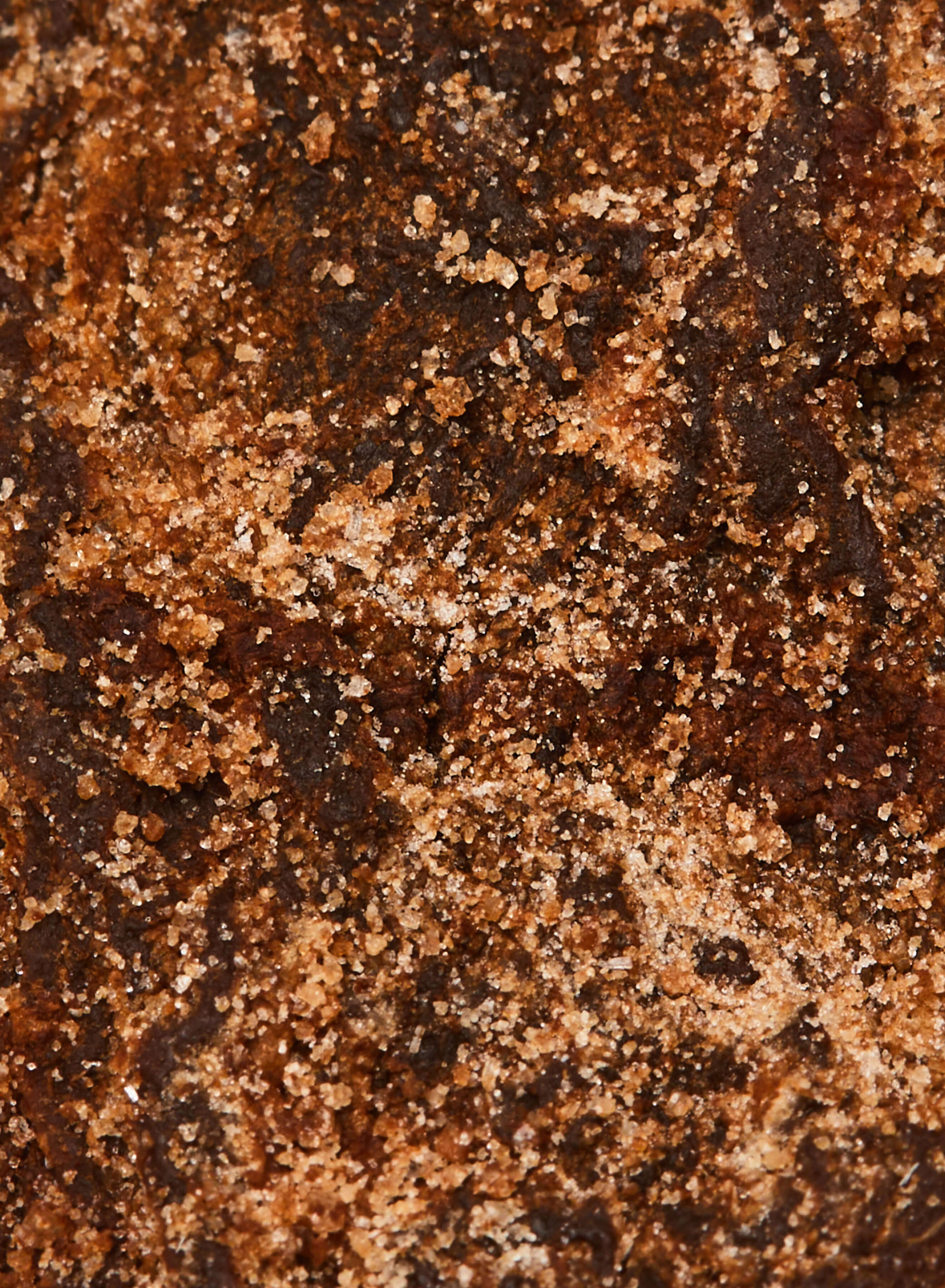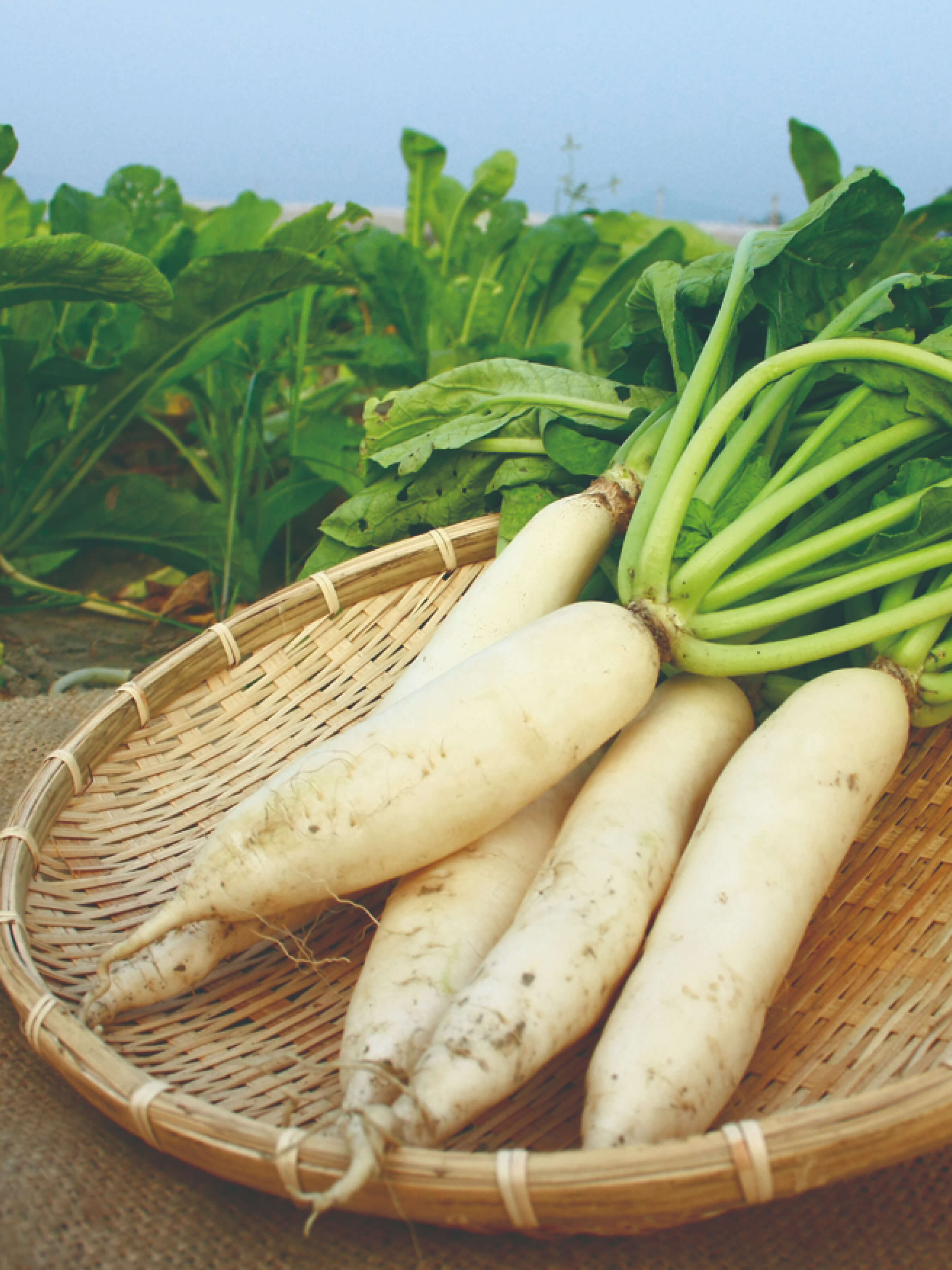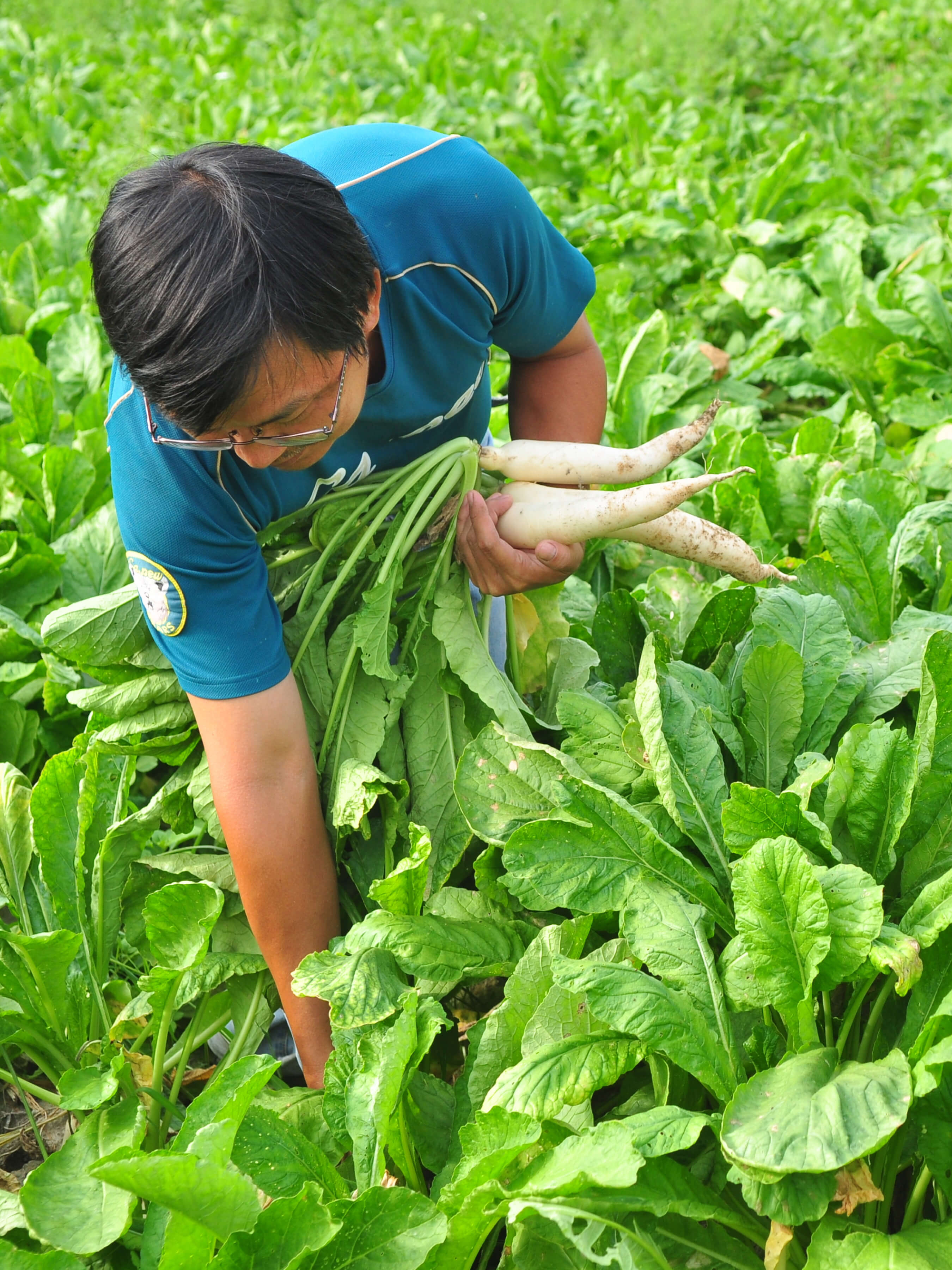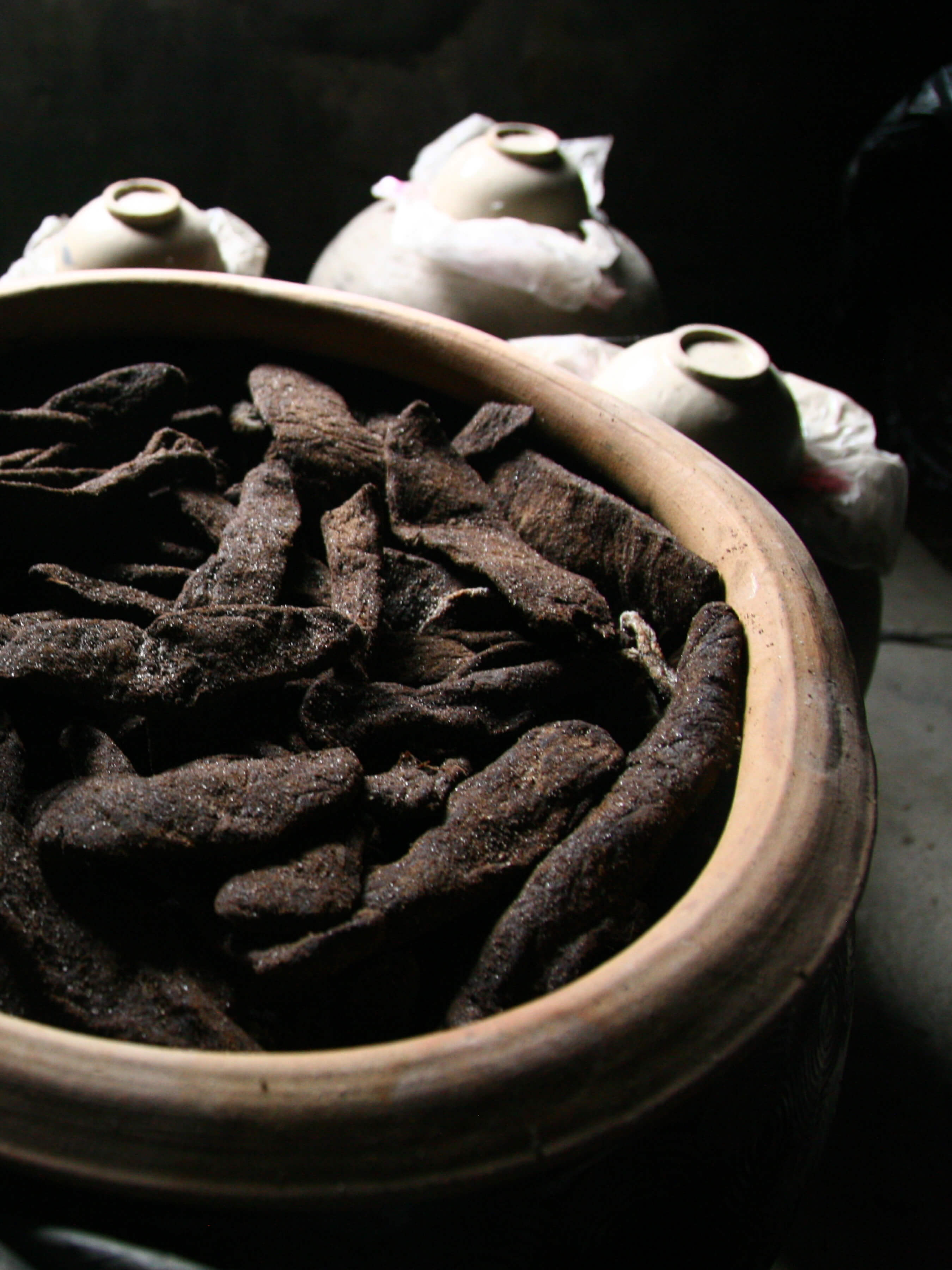Aged Preserved Daikon Radish, known as Lao Luo Bo Gan 老蘿蔔乾 or Lao Cai Po 老菜脯, is a traditional cured vegetable in Taiwan, made by salting and sun-drying daikon radish then letting it ferment for years (in some cases, even decades). Aged Preserved Daikon Radish is nicknamed black gold 黑金 and often referred to as poor-man's ginseng 窮人人蔘. The allusions to wealth and value are notable, for from humble beginnings such a rich thing is made. It is one of many pickled foods of the Hakka people, a migratory group with Chinese ancestry that now makes up around 15% of Taiwan’s population.
Meinong Farmers‘ Association makes their preserved daikon radishes from chun yang 朝陽, also known as white jade daikon radish 白玉蘿蔔. Although white jade daikon is relatively small—only the size of a karaoke microphone—it has thin skin and fibers, yielding a more finely textured product than those made from bigger varieties of daikon.
Aged Preserved Daikon Radish is made from the entire daikon. Members of the farmers' association dry-brine the root in salt over the course of a month and then further sun-dry it for one to two weeks. During the drying stage, it’s kneaded and pressed daily to make sure all moisture is removed. Next, they place the radish into a vat (Meinong repurposes vats leftover from alcohol production) to age for five years. During this prolonged aging process, enzymes and microbes turn the radishes near black in color and soften the texture significantly. Finally, the radishes undergo one last round of sun-drying before being packed for us.
The resulting product has a complex flavor that melds deep earthy notes with an almost plum-like sweetness. One of the most common ways to use it is in Old Radish Soup 老菜脯湯, but other dishes seen across Taiwan include Old Radish Roast Chicken 老菜脯烤雞 and Old Radish Omelet 老菜脯蛋.
Tasting Notes and Usage
Complex and earthy with a plum-like sweetness and a soft, supple texture
Soak in water for 5 minutes, then rinse and drain to remove excess salt.
Slice and use in soups, such as Old Radish Soup 老菜脯湯. Pro tip: extract the flavor from the radish by simmering it in water in a Tatung steamer before using the resulting stock in other applications.
Ingredients and Instructions
White jade daikon radish, salt
200 g / 7.05 oz
Additive-free
Store in a cool, dry place. Despite the best before date printed on the package, this radish can be left to age.
About Meinong Farmers' Association
Founded in 1919, the Meinong Farmers' Association 美濃農會 stewards the Meinong Plains 美濃平原, a Hakka area with over 3,000 acres of fertile land just northeast of Kaohsiung. Twenty years ago, Meinong was known for tobacco cultivation. Local farmers would grow a little bit of radish next to the tobacco for their own sustenance. However, when Taiwan joined the World Trade Organization in 2002 and tobacco companies stopped contracting Taiwanese farmers for tobacco leaves, Meinong decided to commercialize the radish.
Meinong only grows chun yang 朝陽 radish, also known as white jade 白玉 radish. Radishes are planted in September, then harvested and preserved between October and December. Once harvested, members of the association preserve both the radish and its leaves. While the radishes are sold as Preserved Daikon Radish and Aged Preserved Daikon Radish, the leaves are pickled into Luo Bo Miao 蘿蔔苗.
